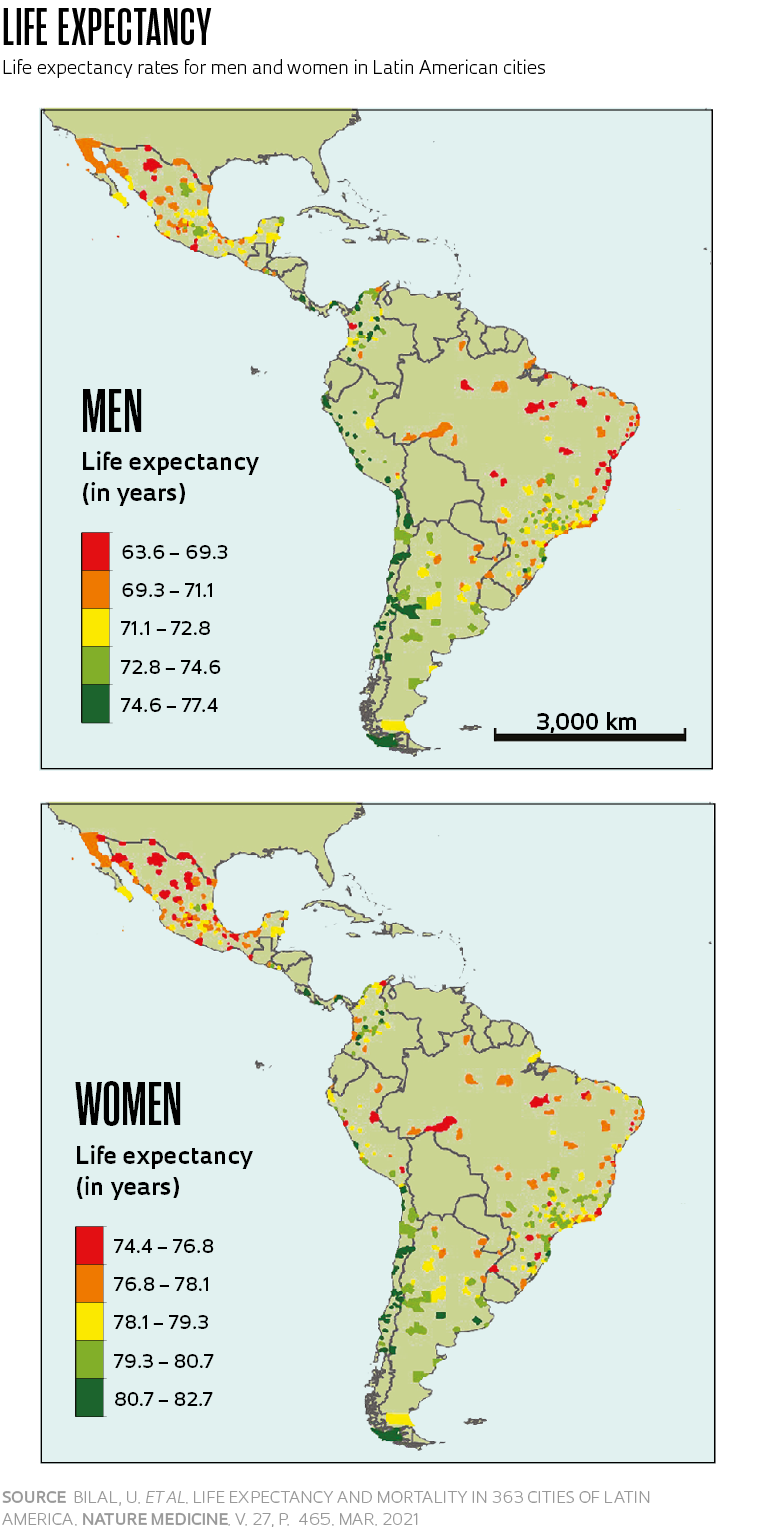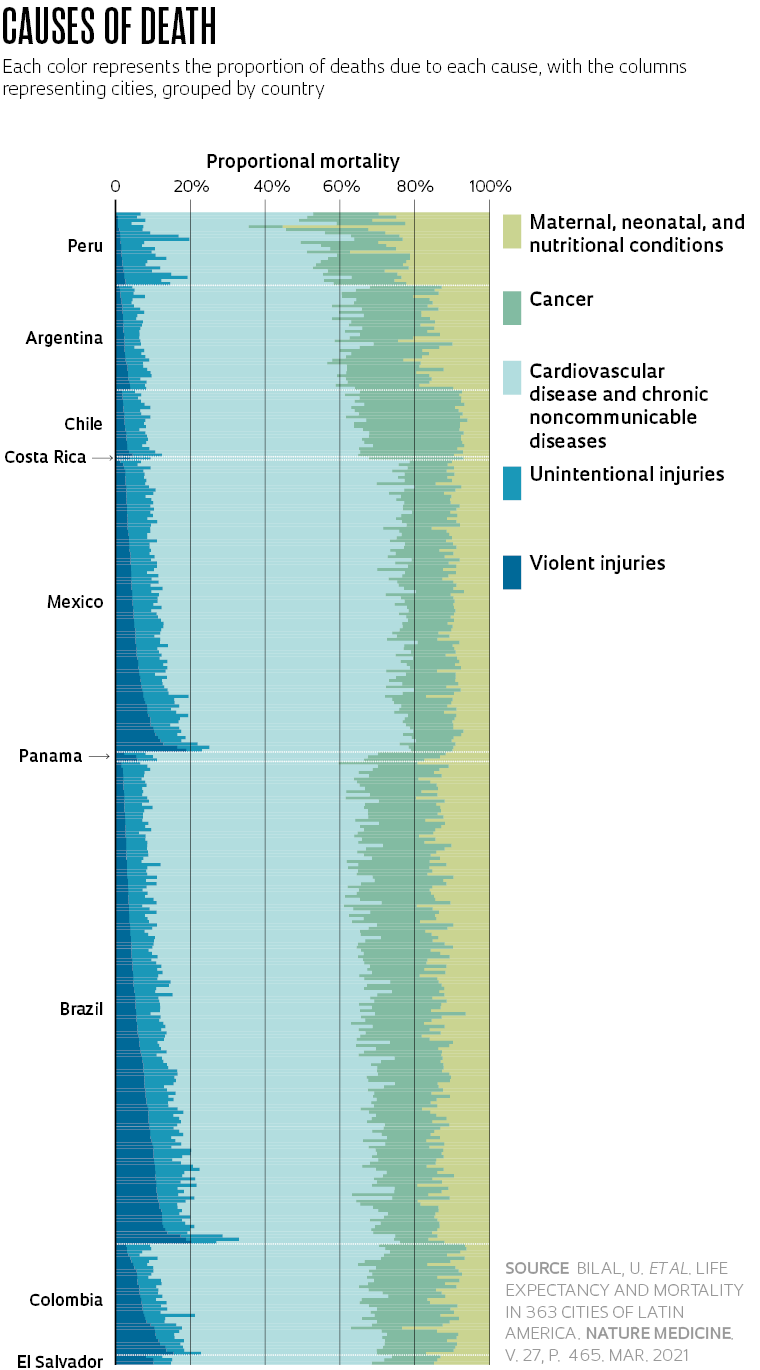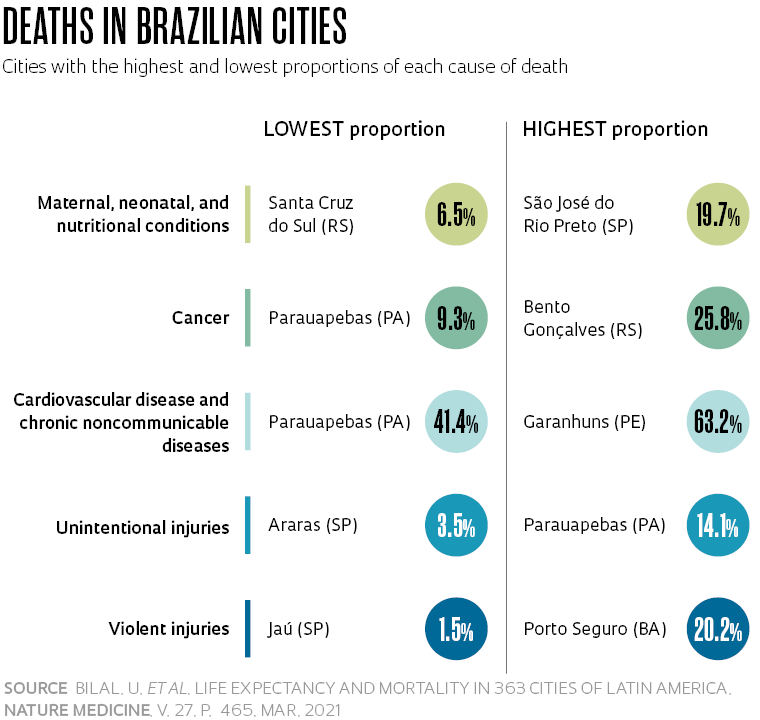A comparative study of 363 cities in nine Latin American countries found that life expectancies vary widely—by as much as 14 years—across cities in the region. Longevity disparities on the continent were found to be highest in Brazil—where life-expectancy gaps across cities are as large as 10 years, and longevity increases in a North-South pattern—as well as in Peru and Mexico.
In the countries they analyzed, the researchers found that life expectancy decreases with city size for men, but not for women. The larger the city, the higher the incidence of violent deaths, with young men being the primary victims. In addition to violent deaths, the study assessed variability in other causes of death including maternal, neonatal, and nutritional causes, cancer, cardiovascular disease and other noncommunicable diseases, and injuries.
Life expectancy has declined by 1.94 years in Brazil as a result of the pandemic
Average life expectancy in Latin American cities varies by more than 8 years for women—from 74.4 to 82.7 years—and by 14 years for men—from 63.5 to 77.4 years. The proportion of violent deaths also varies widely, from 1% to as much as 20% of total deaths depending on the city. “Studies about population longevity typically look at averages for countries or provinces within countries. But in Brazil, for example, the country average of 75.7 in 2018 masks considerable differences across cities,” says lead author Usama Bilal, an epidemiologist at Drexel University’s Dornsife School of Public Health, in Pennsylvania, noting that the Latin American cities with the highest longevity have similar life expectancies to those in high-income countries, such as Sweden and Switzerland.
The cities with the longest life expectancy were identified in Panama, Chile, and Costa Rica: 81–82 years for women and 75–77 years for men. The individual city with the highest life expectancy for women was David, in Panama, at 82.7 years, while Juliaca, in Peru, had the lowest (74.4 years); Lima, Peru, had the highest life expectancy for men, at 77.4 years, while the lowest was found in the Mexican city of Acapulco de Juarez (63.6 years). The cities with the lowest life expectancies for women (77 to 78 years) were in Brazil, Mexico, and Peru. Mexico and Brazil also had the shortest life expectancies for men, along with El Salvador, at 71 years. Within countries, the largest ranges in female life expectancy across cities were observed in Brazil and Peru, at respectively 6.4 and 6.6 years. For men, the largest ranges were 8.6 years in Brazil, and 10.4 years in Mexico. Within Brazil, Bento Gonçalves, a city in the southern state of Rio Grande do Sul, had the highest life expectancy for both men (75 years) and women (82 years). Conversely, Guarapuava, in the neighboring state of Paraná, had the lowest life expectancy for women (75 years), while Itabuna, in the northeastern state of Bahia, had the lowest rates for men (66.3 years).

A Nature article reporting on the study also compared causes of deaths across cities, confirming the intuitive notion that cities with higher levels of education, water access, and sanitation will have higher life expectancies and fewer deaths from infectious diseases. In Brazil, death rates from different causes also vary across regions. The study found the highest rates of death from communicable diseases in the North, violent deaths in the Northeast, noncommunicable diseases and cardiovascular disease in the Southeast, and deaths from cancer in the South. “The causes of death to some extent reflect regional social and economic patterns,” Bilal explained in an email interview.
Waleska Teixeira Caiaffa, a professor at the Federal University of Minas Gerais (UFMG) School of Medicine, who led the Brazilian leg of the study, notes that, in general, higher rates of communicable diseases are associated with poorer social and economic conditions, while higher rates of chronic diseases, such as cancer, are associated with higher longevity. In recent years, Brazil has seen a downward trend in communicable diseases and an upward trend in deaths from chronic diseases, she notes, reflecting higher life expectancies. “These trends, however, are likely to be affected by the COVID-19 pandemic, which could increase the incidence of chronic diseases,” predicts the researcher.




